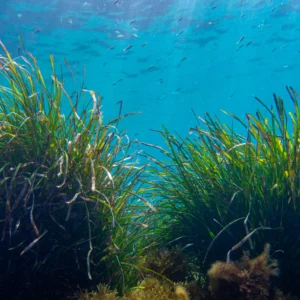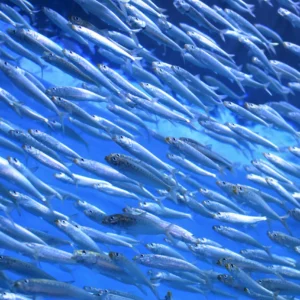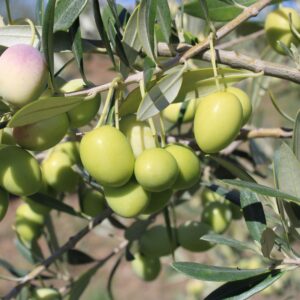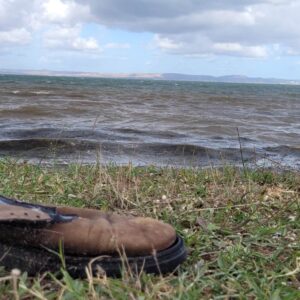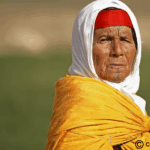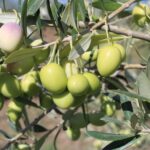Water birds have enchanted human civilization since ancient times. From the hieroglyphics of ancient Egypt to the intricate mosaics of ancient Rome, these avian creatures have captivated our collective imagination. But today, they face urgent threats. Globally, 30% of seabird species are at risk of extinction due to habitat loss, human activities, and climate change. Tunisia is one of the important Mediterranean havens for migratory birds. In our quest for understanding and highlight the conservation efforts for these animals in Tunisia, we embarked on a journey to meet with dedicated scientists and impassioned environmental activists. Their tireless work revolves around the collection of crucial data and the implementation of strategic conservation processes in various hotspots of these magnificent avian creatures across the country.
May 2023, Tunisia
Tunisia’s Seabird Serenade: where migration meets nesting paradise
Tunisia’s coasts and islands serve as an important breeding ground for a variety of sea birds. These birds migrate from the north of the Mediterranean to the Tunisian shores to nest and reproduce, taking advantage of the diverse array of habitats and resources available in the region. Among these sites, Zembra Island stands out as a hotspot for many bird species.
According to Intissar Thabti, a doctor in biology and marine ecology specializing in marine birds, Zembra, an island located 66km from Tunis in the north of Tunisia, is home to the largest population of Scopoli’s Shearwater in the region. This species migrates from the Atlantic Ocean and prefers to nest in the deep burrows of Zembra’s rocky shores, where they raise their young.
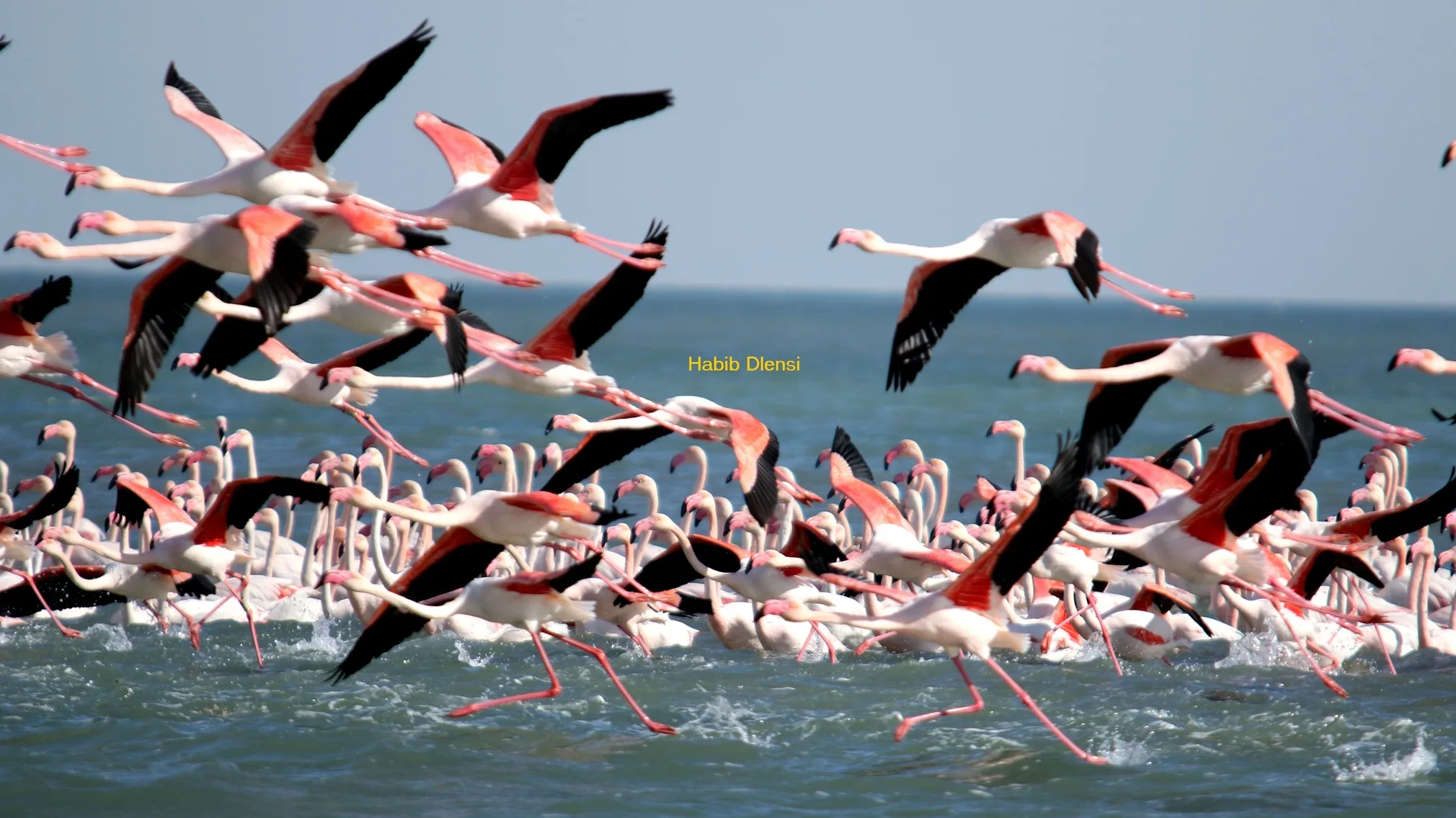
Aquatic and marine birds, two distinct yet equally essential groups, play pivotal roles in maintaining the delicate balance of our ecosystem. According to Dr. Intissar Thabti, marine birds rely on the abundance of marine resources, such as fish and krill, for their survival. Often spotted near fishing vessels, ships, and ports, these birds depend on access to the sea for their nourishment. On the other hand, aquatic birds inhabit wetlands, encompassing lakes and rivers, drawing their sustenance from precious freshwater resources.
Marine birds represent 3,5% of the total bird species in the world. In Tunisia, although, it is difficult to determine the exact number of marine avifauna populations that inhabit its’ sites and migrate through them, certain species such as yellow-legged gulls and terns are more abundant than others. These birds are often seen in close proximity to ports, where they have formed a special bond with local fishermen, often accompanying them as they go about their daily activities.
Intissar Thabti
Unveiling Nature’s Secrets: Tunisia’s Waterbirds as ecological sentinels
Water birds hold a vital role within Tunisia’s wetland ecosystems, but their existence is under siege. The perils they face, ranging from habitat loss and pollution to the menacing grip of climate change, carry profound ecological consequences. The delicate equilibrium of these ecosystems is at stake, as disruptions caused by these threats can trigger population declines and even push species toward the brink of extinction.
An unbalanced ecosystem awaits if these remarkable birds vanish from the scene. Sea birds, in particular, provide invaluable insights into the intricate web of life within a given biotope. By delving into their dietary habits and feeding patterns, scientists can unravel crucial information about the abundance and distribution of prey species across various trophic levels. Intissar Thabti underscores the significance of these birds by emphasizing their role as critical indicators of ecosystem health.
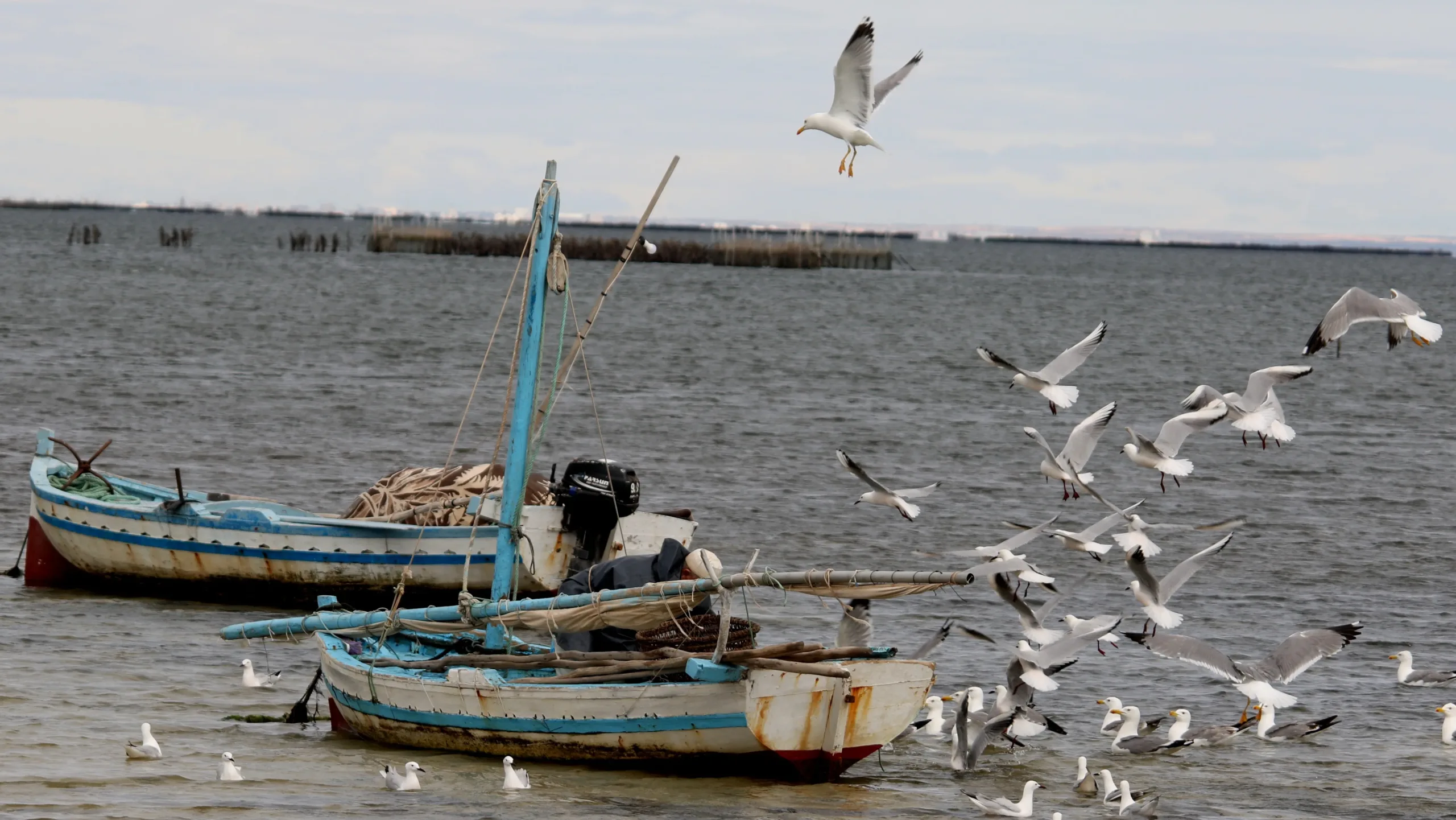
Sea birds not only play vital ecological roles in maintaining a healthy aquatic ecosystem, but they also serve as important indicators of environmental health. Changes in bird populations or behavior can be an early warning sign of environmental problems, such as pollution or habitat loss. By monitoring the populations of aquatic birds, scientists and conservationists can identify issues and take action to address them before they become more severe.
Intissar Thabti
Perilous Waters: Seabirds at the brink of survival
Sea birds, both those that dwell along the coastlines and those that venture into the vast expanses of the open ocean, share a common hunger for fish, crustaceans, and aquatic vegetation. They navigate the tumultuous waves with grace, only to return to the safety of land for nesting. Yet, despite their captivating existence, these winged wonders find themselves ensnared in the clutches of threats that mirror the challenges faced by their land-dwelling counterparts.
In a recent report titled “State of the World’s Birds 2022,” presented by BirdLife International, reveals a shocking truth: seabirds stand among the most imperiled avian groups on our planet. The statistics paint an alarming depiction, revealing that a staggering 30% of seabird species are teetering on the precipice of extinction. Within this group, the situation is even direr, as 19 species cling desperately to survival in the Critically Endangered category, 34 hovers on the edge of Endangered, and 58 teeter on the brink of Vulnerable. Additionally, an alarming 11% of species are classified as Near Threatened, while a disheartening 57% face a downward trajectory, their populations dwindling.
Habib Dlensi, environmental activist and General secretary at the Regional Observatory for the Environment in Sfax (ORES), has dedicated his life’s work to the preservation of birds. Armed with his trusty camera, he has spent years immersed in their world, driven by an insatiable thirst for discovery and a fierce determination to safeguard their existence.
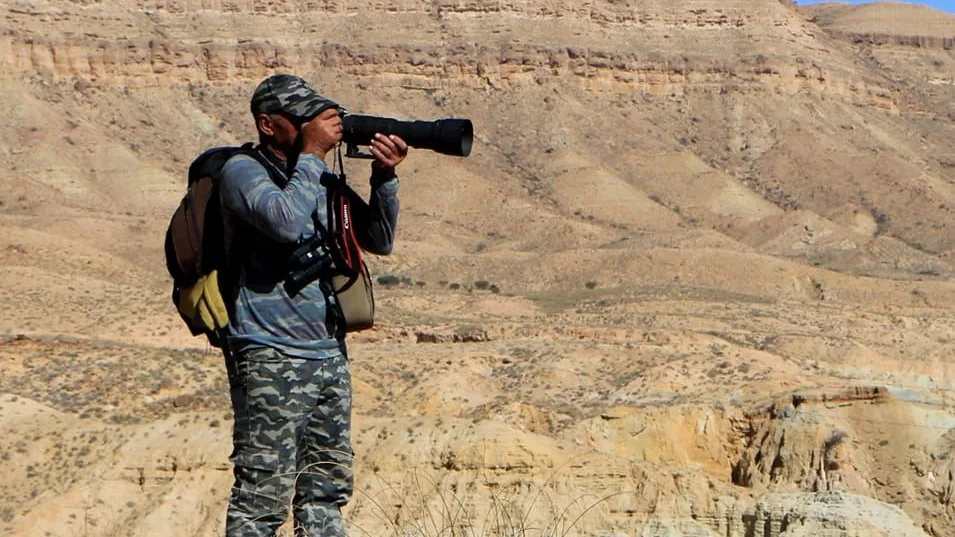
With a touch of melancholy in his voice, Dlensi reflects on the changes he has witnessed over the passage of time, recounting the days when Tunisia’s aquatic and marine bird populations thrived in abundance. But now, a palpable sense of concern hangs heavy in the air as these majestic beings face an onslaught of multifaceted threats. According to H.Dlensi “The urgency of the situation is clear. Seabirds, once plentiful and resilient, now teeter on the brink of oblivion. The delicate balance of our marine ecosystems hangs in the balance.
From the 90s until now, the populations of these birds have significantly decreased, which is a cause for concern for the future of these species. I remember many species that used to exist and migrate to our lands. Now, it is rare to witness them, and this is a worrying trend.
Habib Dlensi
Loss of habitat threatens aquatic bird populations
Aquatic birds in Tunisia are facing grave threats to their survival and well-being, primarily due to the loss and degradation of their habitats. According to the WWF North Africa, Tunisia’s rich wetland environment that used to attract up to half a million birds has lost around 28% of its wetlands in just over a hundred years, mainly due to drainage. Urbanization is also responsible for the yearly loss of over 3,300 hectares of wetlands. In accordance with the same source, these areas are considered a critical condition for the survival of aquatic bird species that are unfortunately being lost and altered at an alarming rate, leading to a significant decline in the availability of food and nesting sites.
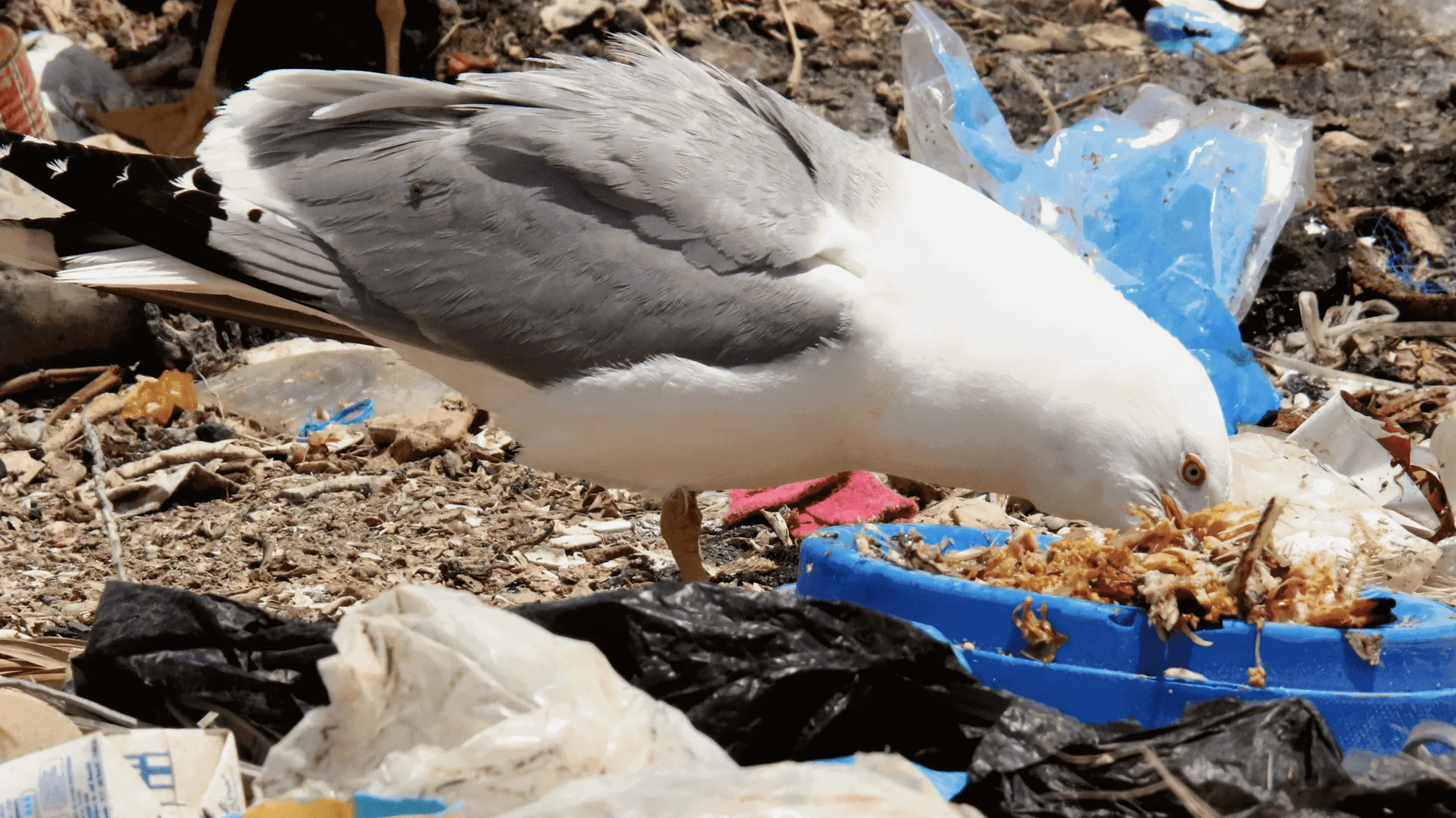
According to Habib Dlensi, wetlands in Tunisia, like many other regions, rely on a continuous supply of fresh water to support the plants and animals that live there. However, in recent years, Tunisia has experienced drought conditions, which have impacted the availability of fresh water in wetlands. This has caused the water levels in wetlands to drop, leading to a shortage of food and shelter for aquatic birds. As a result, it has become more difficult for these birds to survive and breed, which can ultimately impact their populations. The Marbled Teal for example, a species of aquatic bird, that is present year-round in Tunisia’s wetlands, has critically declined due to various factors, including the loss of wetland habitats, the and scarcity of freshwater.
On the Brink: Aquatic birds caught between pollution and the menace of ghost fishing
Longside habitat loss and pollution are other major threats to aquatic birds in Tunisia. Industrial and agricultural runoff, sewage, and oil spills can contaminate water sources, making it difficult for birds to find clean water for drinking and bathing. “Oil pollution in the sea can be devastating for aquatic birds, causing them significant distress and suffering. The oil sticks to their feathers, making them heavy and impairing their ability to fly, swim, and find food.” declares I. Thabti. Furthermore, “Birds can easily mistake plastic debris for food, which can lead to ingestion and death, affirms Habib Dlensi, “plastic can entangle birds, making it difficult for them to move and feed, ultimately leading to their demise.”
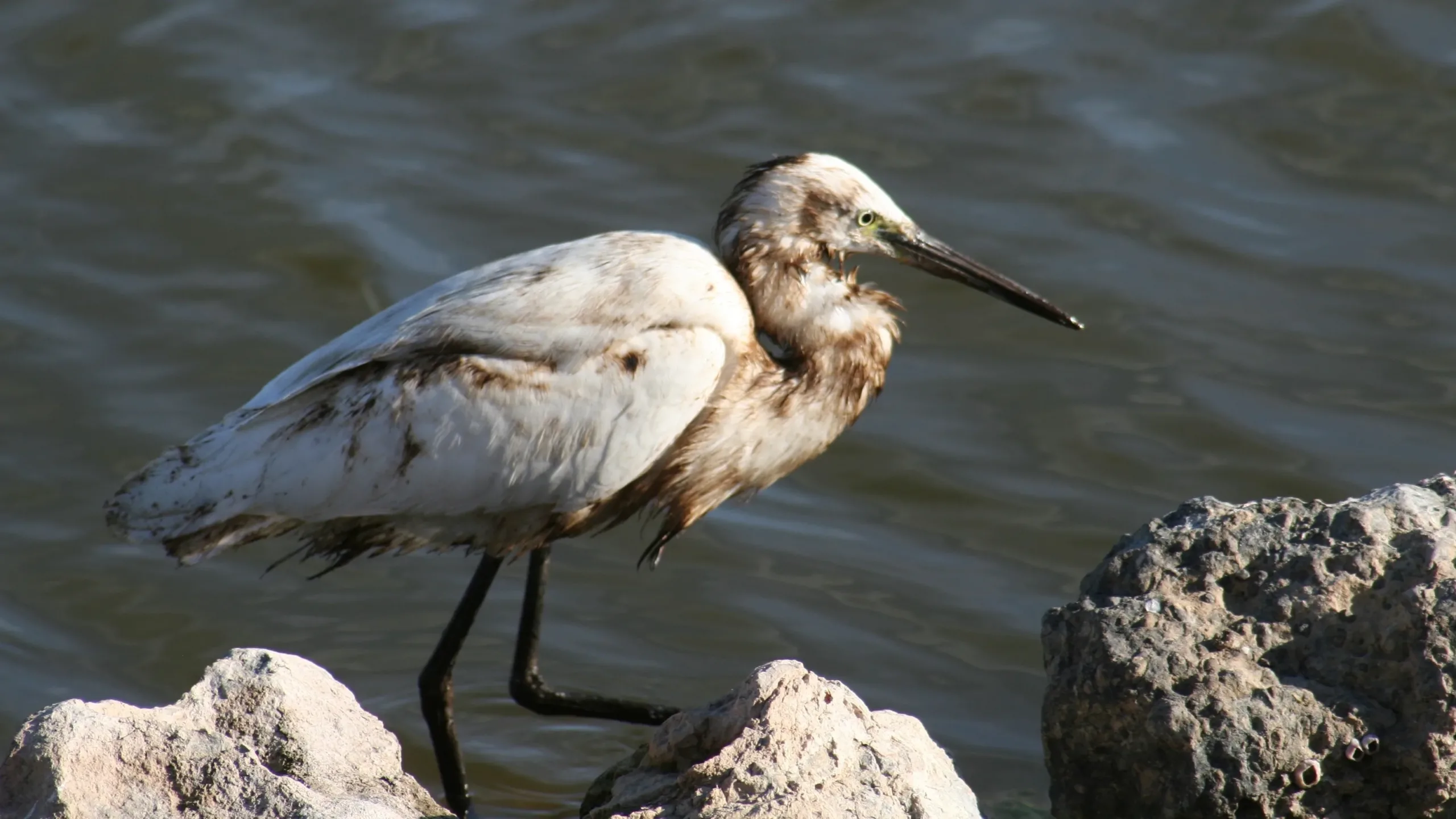
Sea birds are also at risk of pollution caused by discarded or abandoned fishing gear in the sea or on the shores. These birds can become entangled in the lines and nets, becoming trapped and unable to move or find food. This can result in serious injury or death, as witnessed by many cases of flamingos becoming entangled and left to a slow and painful death inside lines and nets.
Habib Dlensi
Based on Habib Dlensi’s statements, overfishing can lead to food scarcity for aquatic birds that primarily rely on fish as their source of sustenance. This can cause birds to struggle to find enough food to survive and reproduce, forcing them to interact more frequently with fisheries in search of easy prey, such as fish caught in fishing gear. This interaction can further exacerbate the effects of overfishing on bird populations, as it may lead to increased mortality rates and a higher risk of entanglement or ingestion of fishing gear.
The “State of the World’s Birds 2022” report by BirdLife International states that the accidental fishing of sea birds occurs when these animals are hooked or entangled in fishing gear or collide with trawler cables. This threat affects around 100 species of seabirds worldwide and is responsible for hundreds of thousands of seabird deaths every year.
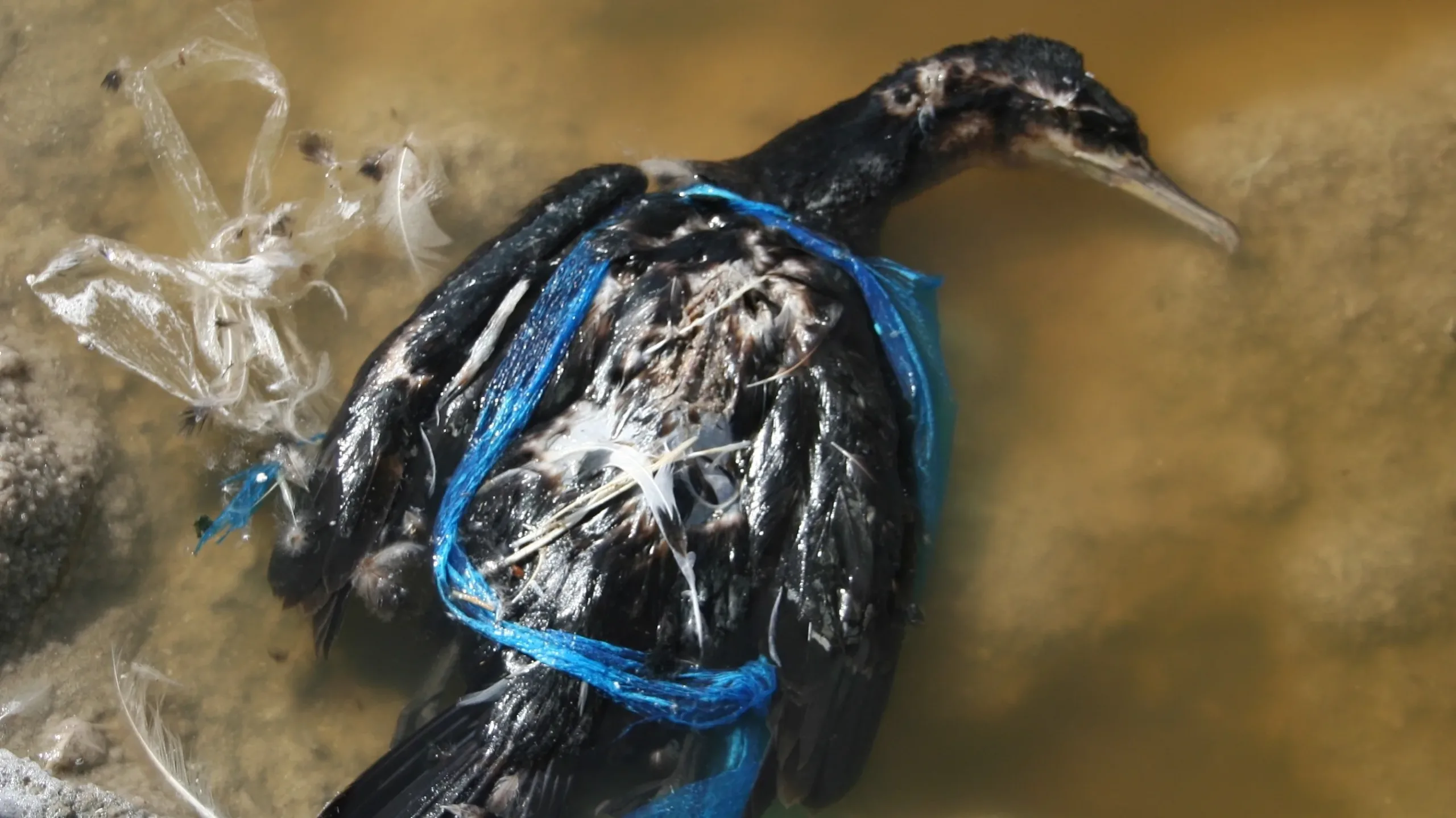
One of the primary threats to marine birds is accidental catch, also known as bycatch. Fishing gear such as gillnets, longlines, and trawlers are particularly adept at capturing these birds. This bycatch can have devastating consequences for bird populations, leading to injury, entanglement, or death. Gillnets, longlines, and trawlers are responsible for significant bird mortality around the world and in Tunisia.
Intissar thabti
A 2019 report from the General Fisheries Commission for the Mediterranean (GFCM), titled “Overview of Mitigation Measures to Reduce the Incidental Catch of Vulnerable Species in Fisheries,” has exposed the harsh reality: seabirds find themselves among the most vulnerable victims of fishing activities. This crucial study reveals a staggering statistic, estimating that a mind-numbing 400,000 seabirds meet an untimely demise as unintended casualties of fishing gear in the Mediterranean each year.
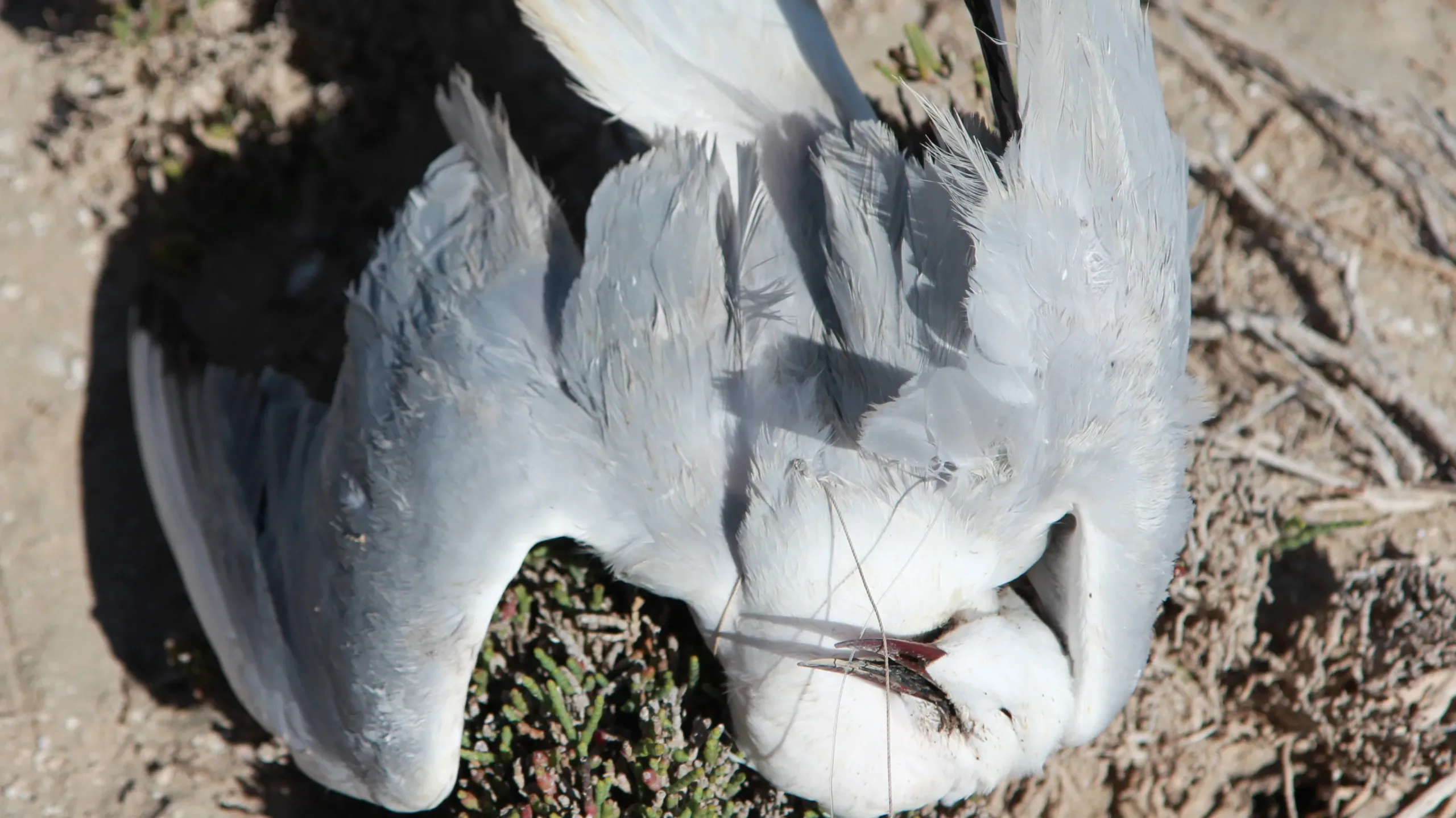
Regrettably, a prevailing sentiment among many fishermen paints a grim picture. When faced with the entanglement of seabirds in their fishing gear, the majority view these winged creatures as nothing more than an inconvenience. Instead of sparing the time to release them, their focus remains fixated on their catch. The tangled fate of seabirds becomes a mere afterthought. The great cormorant, known for its knack for seeking easy prey within the fixed fishing gear, often falls victim to this deadly scenario. Frequently observed in fish traps, it becomes ensnared, its freedom stripped away until the ultimate price is paid, declares Habib Dlensi. Similarly, this species has been observed entangled in anti-bird nets used to protect aquaculture cages, posing a significant risk to its survival according to Intissar Thabti.
Predators and Competitors versus Prey: The battle for survival of water bird species
Predation by non-native species, such as rats and cats, is a significant threat to aquatic and sea birds. This problem is prevalent in Tunisia, and on Zembra Island, cats were introduced to control rat populations, but the unintended consequences have been severe. “The cats have rapidly reproduced, became wild, and begun to prey on marine birds and their eggs, posing a significant threat to bird populations. This predation can cause population declines and a reduction in reproductive success, with severe consequences for the survival of these vulnerable bird species.” Declares Intissar.
According to Habib Dlensi, an example of predation is well noticed in Thyna Salines in Tunisia, which is one of the most important sites for seabird nesting, with colonies of vulnerable bird species such as the Audouin’s Gull, that is used to have population of up to 14,000 breeding pairs, and the elegant Tern, which has a population of over 1,400 breeding pairs. Unfortunately, the area has been impacted by the invasion of stray dogs and wild pigs due to pollution and urban waste being dumped near the breeding sites. As a result, the population of the elegant Tern has decreased to only 200 breeding pairs, and Audouin’s Gull has also decreased significantly according to recent surveys.
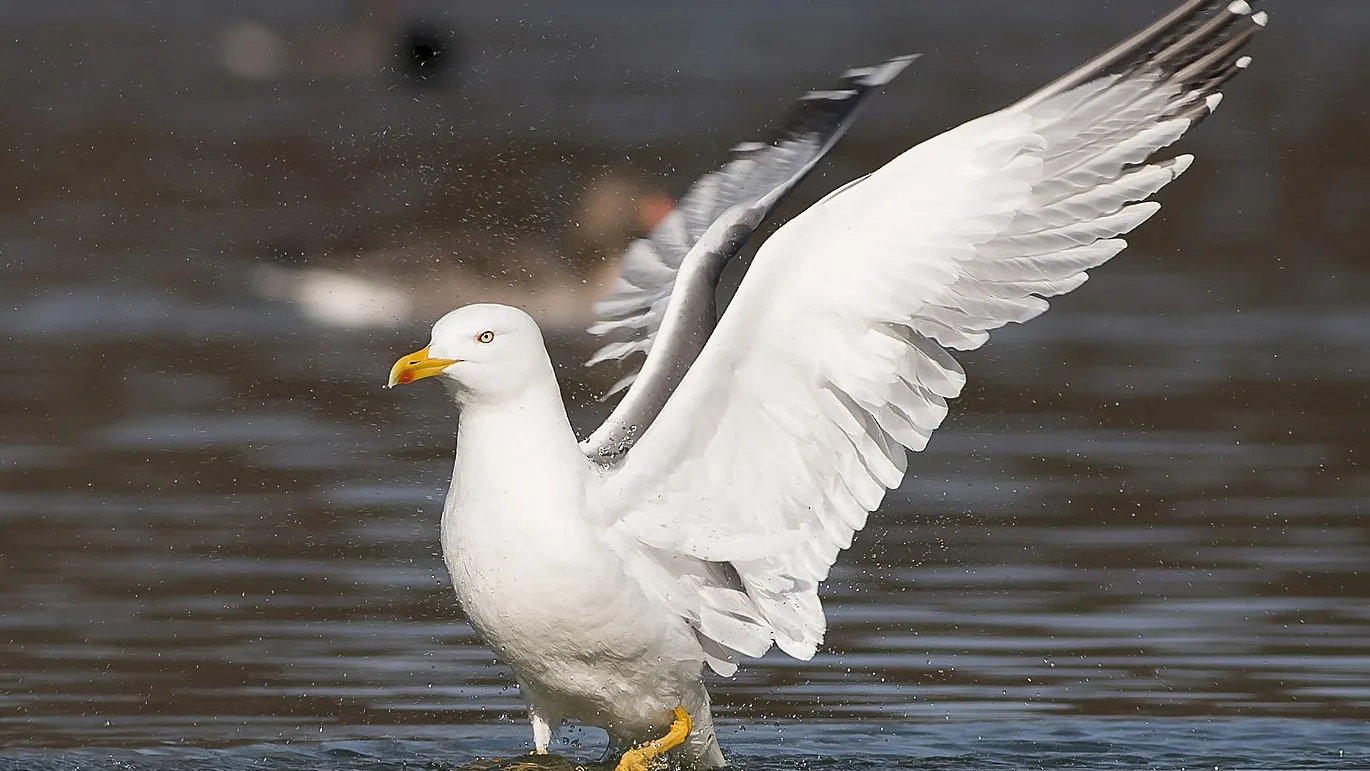
The rapid increase in the population of the yellow-legged gull poses a significant threat to other aquatic bird species. This bird multiplies quickly compared to other species, disrupting the territories of other birds and making it difficult for them to find food. Furthermore, the yellow-legged gull has begun to change its nesting locations due to increased predation pressure and competition for territories with other species. It has taken refuge on islands such as the Kneiss Islands in Tunisia. “This has led to increased competition for resources among bird species and has put additional pressure on vulnerable bird populations.” Confirms Intissar.
An illegal practice: The impact of hunting on the vulnerable sea and aquatic birds
Despite being illegal, hunting and poaching continue to pose a significant risk to aquatic bird populations in Tunisia. Birds are often hunted for their meat by hunters and sometimes fishermen. According to Habib Dlensi, these activities are even practiced illegally in national parks and protected areas in Tunisia, posing a significant threat to the survival of vulnerable bird species.
Sites such as the wetlands Sebkhet Halk El Menzel in Hergla, Sebkhet Khnis in Monastir, and the salines of Thyna, are hotspots for illegal hunting of flamingos. Hunters shoot these beautiful birds with bullets, leaving them to suffer and die without any regard for their welfare. After some time, another hunter comes and collects the carcasses, pretending to have found them dead by coincidence if caught by authorities. This is a blatant lie and a cover-up for illegal hunting practices.
Habib Dlensi
According to Intissar, fishermen are often accused of hunting sea birds, such as gulls and cormorants, for sport or to protect their fishing grounds. They may unintentionally capture these birds while using certain fishing methods, such as gillnets or traps, or kill them when they are entangled in their gears.
Climate crisis unleashed: The endangered flight of aquatic birds in Tunisia
Climate change is an urgent and growing threat to aquatic bird populations in Tunisia, as rising temperatures, changing precipitation patterns, and sea level rise are altering wetland habitats and making them less suitable for many bird species. Moreover, climate change has also impacted the migratory behavior of sea birds and aquatic birds in Tunisia. “For example, the Scopoli’s shearwater, a species of puffin found on the island of Zembra, used to arrive at the island in February and stay until early July.
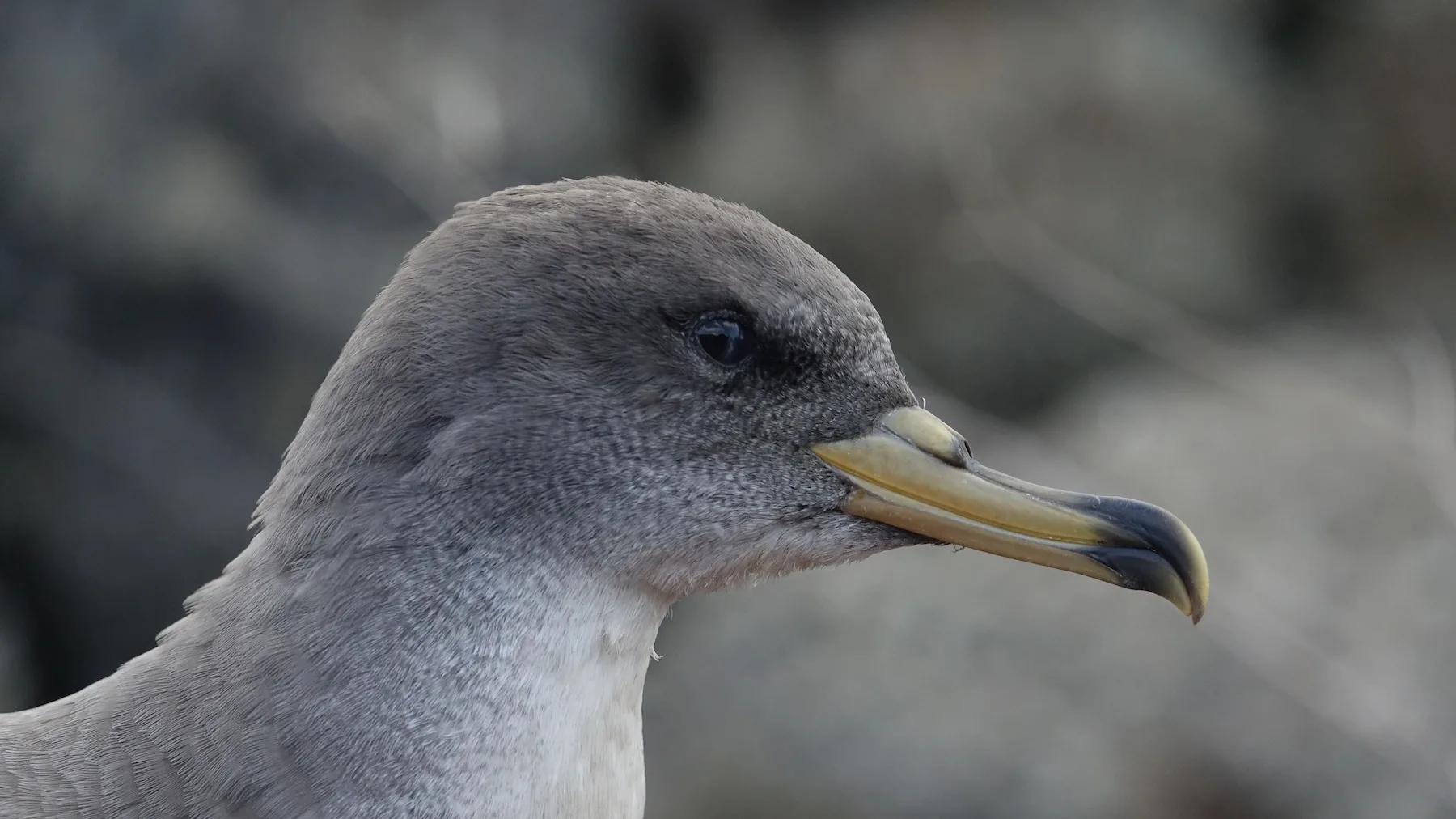
However, in recent years, these birds have been observed arriving earlier in December and January, likely due to the rising temperatures caused by climate change. This change in temperature has influenced their behavior and disturbed their habits, potentially impacting their survival and contributing to population declines.” Declares Intissar.
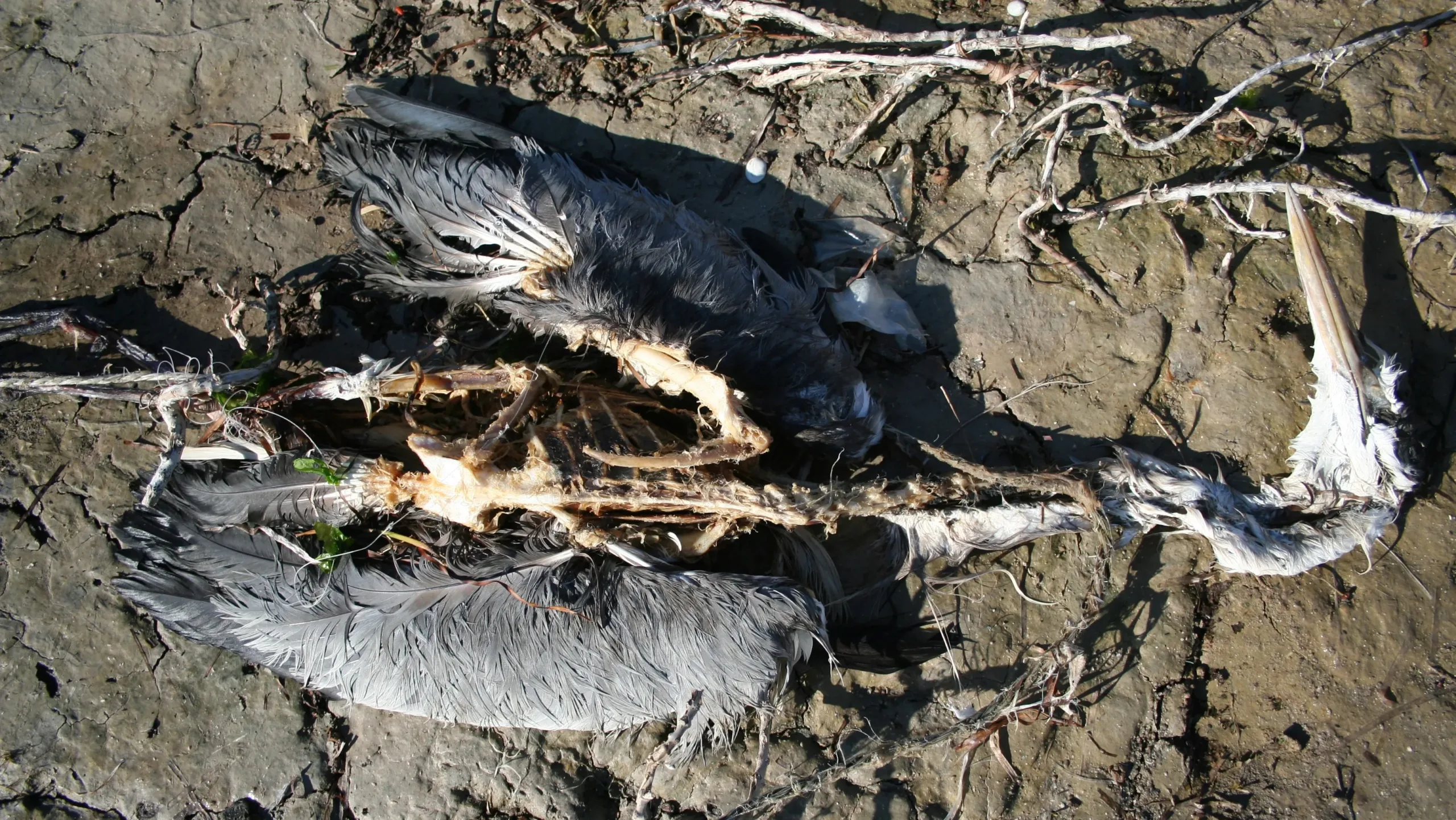
From threats to solutions: Mobilizing research and civil society for waterbird conservation in Tunisia
When it comes to the conservation of Tunisia’s precious water birds, a collective effort involving associations, managers, and the research community proves indispensable. Researchers provide critical data on species populations, behaviors, and threats to their habitats, which enables conservation managers to develop effective measures for protecting these bird species and their habitats.
Based on Intissar Thabti’s statements, through research, scientists can identify factors that may be contributing to declines in certain populations or habitats, and work to mitigate these issues. Furthermore, research can help identify areas where conservation efforts should be focused, such as protected areas or restoration projects. Conducting research on these species requires significant funding and resources. Researchers often work in natural areas, which can require working day and night, in adverse weather conditions, and with associated risks. However, a disheartening reality looms overhead a severe lack of funding and support often plagues researchers committed to the preservation of Tunisia’s water birds. Despite the pivotal role that scientific research plays in understanding the threats these species face, the resources needed to carry out this critical work remain scarce. This lack of support can hinder progress in developing effective conservation strategies, leaving these vital ecosystems vulnerable to decline.
However, this approach is only effective when supported by authorities responsible for enforcing laws and preventing illegal violations of these species.
Habib Dlensi
But, the involvement of civil society alone, without the willingness of authorities to coordinate and without an agreement with hunting associations, is not enough to preserve these species and maintain their habitats secure and favorable, insists H.Dlensi.
Credit cover photo: Image © Unsplash / Nelson Eulalio
This article was developed in collaboration with the Earth Journalism Media Mediterranean Initiative project.
Copyright © 2023 Blue Tunisia. All rights reserved
Sources:

